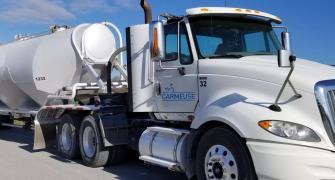
Do you have a question about this application? Ask our specialists
Contact us
What is Waste-to-Energy?
Waste-to-Energy refers to the process of converting non-recyclable waste into usable energy sources – including fuel, heat, or electricity – through combustion or other means. By providing alternative fuel/energy sources, Waste-to-Energy treatments can lower greenhouse gas emissions by offsetting the need for traditional fossil fuels. Waste-to-Energy processes can also reduce methane gas generation by reducing the volume of municipal solid waste (MSW) destined for landfills.
While energy recovery is important for sustainable energy initiatives, Waste-to-Energy treatments that involve incinerators must be closely regulated to control air emissions. Flue gases from waste incineration require cleaning to reduce the risk of acid gases, heavy metals, and particulate pollution from being released into the atmosphere.
Our Role in Waste-to-Energy
What We Do
Carmeuse and our affiliates support the needs of Waste-to-Energy providers from End-2-End.
Waste-to-Energy facilities are under constant pressure to comply with growing regulations. This includes lower emissions limits of acid gases and heavy metals. Carmeuse lime products are a vital component of effective flue gas treatment to prevent these pollutants from being dispersed into the air.
How it Helps
- Dry Flue Gas Desulphurization – An atomized lime slurry is injected into the vessel to react with and remove SO2, HCl & other acid gases. While the lime is introduced as a slurry, all moisture evaporates in the scrubber, leaving a dry product and eliminating the need for wastewater treatment.
- Dry Sorbent Injection (DSI) – In dry sorbent injection, hydrated lime is injected directly into the flue gas duct to remove SO2, HCl & other gaseous pollutants, protecting the atmosphere from harmful emissions. When DSI is used before the air preheater, the injected hydrated lime can decrease corrosion by reducing the risk of the sulfur dioxide (SO2) gas converting to sulfuric acid (H2SO4).
- Ash Stabilization & Solidification – Often, lime products can be used to neutralize and stabilize residual incineration ash. When the material cannot be repurposed, lime can be used to solidify and reduce the leachability of the waste for proper landfill disposal.
Lime Slaking Systems & Upgrades
Over time, equipment at Waste-to-Energy facilities may need updated or replaced due to normal wear and tear or for the integration of new technologies. Carmeuse Systems supplies advanced equipment solutions for lime storage, handling, and slaking.
Our expert engineers can design the right solution to keep your operation running smoothly, from new lime handling systems and slakers, to retrofits and upgrades for your existing equipment. For additional information related to our lime handling expertise, visit the website.
Supplying Lime for Various Applications









